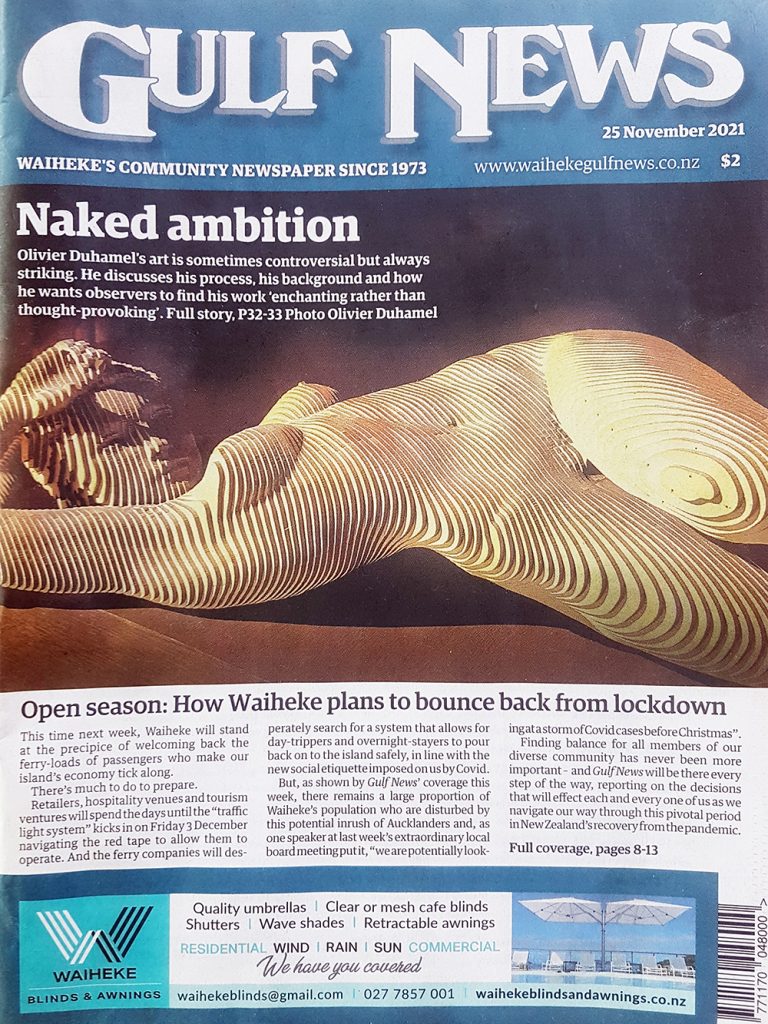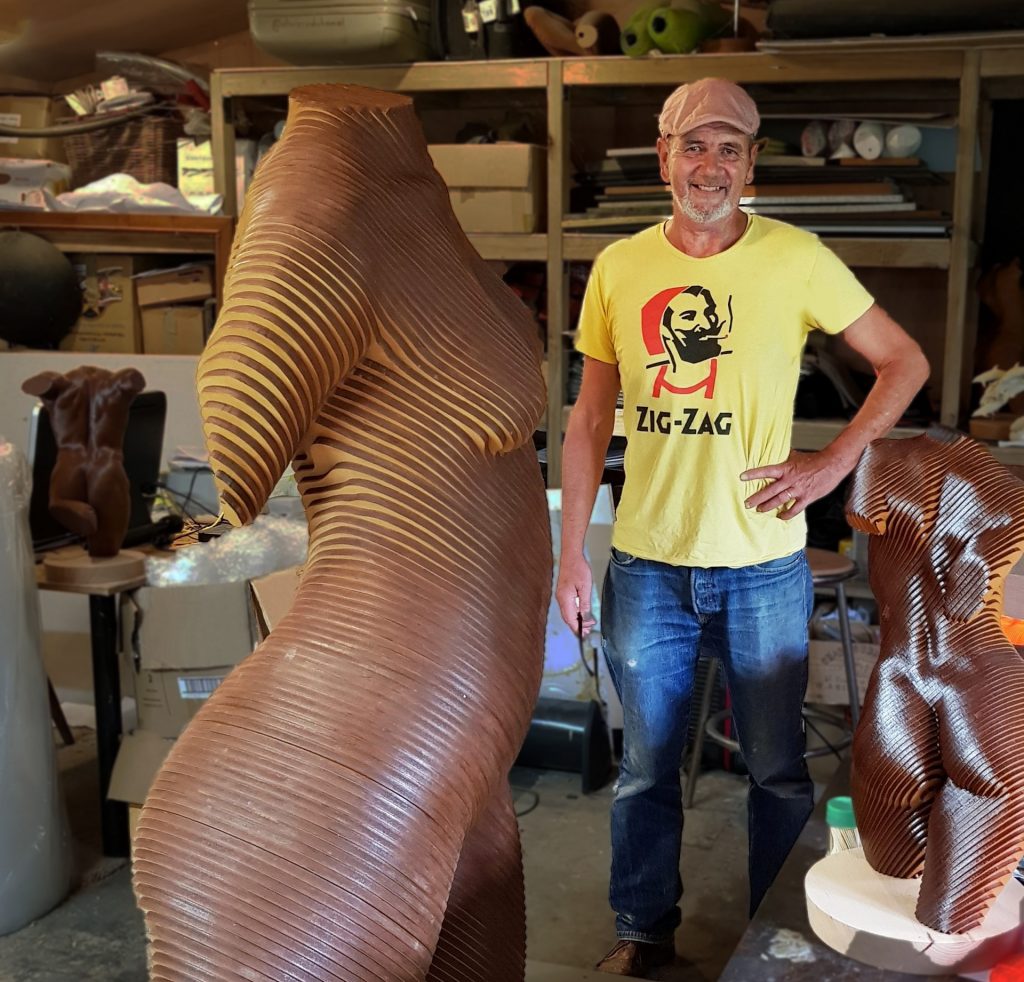

Waiheke Gulf News 25 November 2021
A study in beauty, emotion and mastery of the craft. Michelle Barber talks to Olivier Duhamel
Michelle Barber: What’s your background?
Olivier Duhamel: Thanks for thinking of me for your column Michelle. After years of travels, island hopping, young, beautiful, and free, Marie-France and I arrived here in 1987 by accident of luck, discovering Waiheke on the very first day. We quickly made many friends, asked for permission to stay a bit longer and have now been New Zealanders for longer than most New Zealanders. I am still an immigrant though, still feel very French and want to thank Aotearoa for making me feel welcome and letting me grow roots on this beautiful land. When our children were still children, I spend 15 years in an office working as an IT engineer. I loved it, found it to be ingenious, creative. For once in my life, I was good at something. As my responsibilities grew along with my salary and stress level, I realised that this was not really me, that I was pretending to be someone else. Following a redundancy, my wife encouraged me to pursue my artistic ambitions. Before all that, I spend some years smuggling second-hand cars into western and central Africa, a life of freedom and adventures for this young man. A yellow fever and cholera vaccination certificate was needed though.
MB: How long have you been making art?
OD: My first exhibition was in 2004 (a series of 6 drawings that are still available to the astute collector BTW). In 2006, a couple of friends and I decided to try melting bronze from my garage. Once I had managed an OK piece, I took it to a gallery in Auckland. It sold within a week and the gallery asked for more. I have been a full-time artist ever since and want to take this opportunity to thank Parnell gallery for their support. I am envious of my colleagues who have many more decades of practice behind them. It always shows.
MB: What does your work aim to say if anything?
OD: My work is not trying to convey any message, it explores no conceptual examination, and I do not feel the need to explain it. I am simply trying to capture the beauty and sensuality of my subject of study. (To my models, please be assured that you are not just a “subject of study”) When it comes to art, I am chiefly concerned with beauty, emotion and mastery of my craft. I am hoping that people find my work enchanting rather than thought provoking.
MB: Who are your biggest artistic influences?
OD: Easy one that one. I only have one influence. It is the strongest, most powerful kind of influence. You could call it an obsession, the one thing that makes the world go round. And I see no reason why it should not be expressed in art. I am talking about money of course. Still, I have been accused of exploiting women’s body for profit (I wish it were true) or of being your average dirty old perv, which is not entirely true either, as I am not that old after all. I prefer to justify myself by saying that I am celebrating the beauty of the female form. In any case, I never suffer from the blank canvas syndrome. I see myself as a digital artist. Digital art is often misunderstood, dismissed as too easy, in the same way that 19th century art officialdom disparaged photography, which has nonetheless since acquired its letters of nobility. Before becoming traditional, any technique has necessarily started out by being new and avant- garde. I like to say that if guys like DaVinci or Michelangelo had access to computers, they would have most certainly been using them, not that I have the audacity to compare myself to either of these two chaps.
MB: What else do you do?And does this influence your work?
OD: I am involved in the [ s p a c e ] collective in Oneroa. When a lease became available, a few friends and I decided to give it a shot. I am surprised that there are not more similar collectives around the country. It is very beneficial for artists to understand the business on either side of the canvas. Artists are typically working in the loneliness of their studio and rarely get to know their clients. Being in contact with the public gives us an invaluable insight on how our work is perceived. It is also very rewarding for clients to talk directly to the artist.
MB:How are you coping with lockdown?
OD: This has only been influencing my work in the sense that most of my retail outlets here in NZ and around the world have been closed for extended periods, and that all the shows, fairs, and salons I normally participate in have been cancelled worldwide. I used to take pride of my contribution to the NZ balance of trade, no more. I am extremely grateful of the various subsidies that the government has made available to help businesses in the same predicament. I am grateful for the continued support of my local Waiheke clients too. Other than that, I like to joke that 90% of my sculptures are now fully waxed. Finally, I could not give this interview without giving credit where credit is due and publicly acknowledge the contribution of the people who help me in the workshop and in particular my long-term assistant and studio manager, Vasco Humbert.
Michelle Barber is the owner/operator of Artisphere.co.nz
